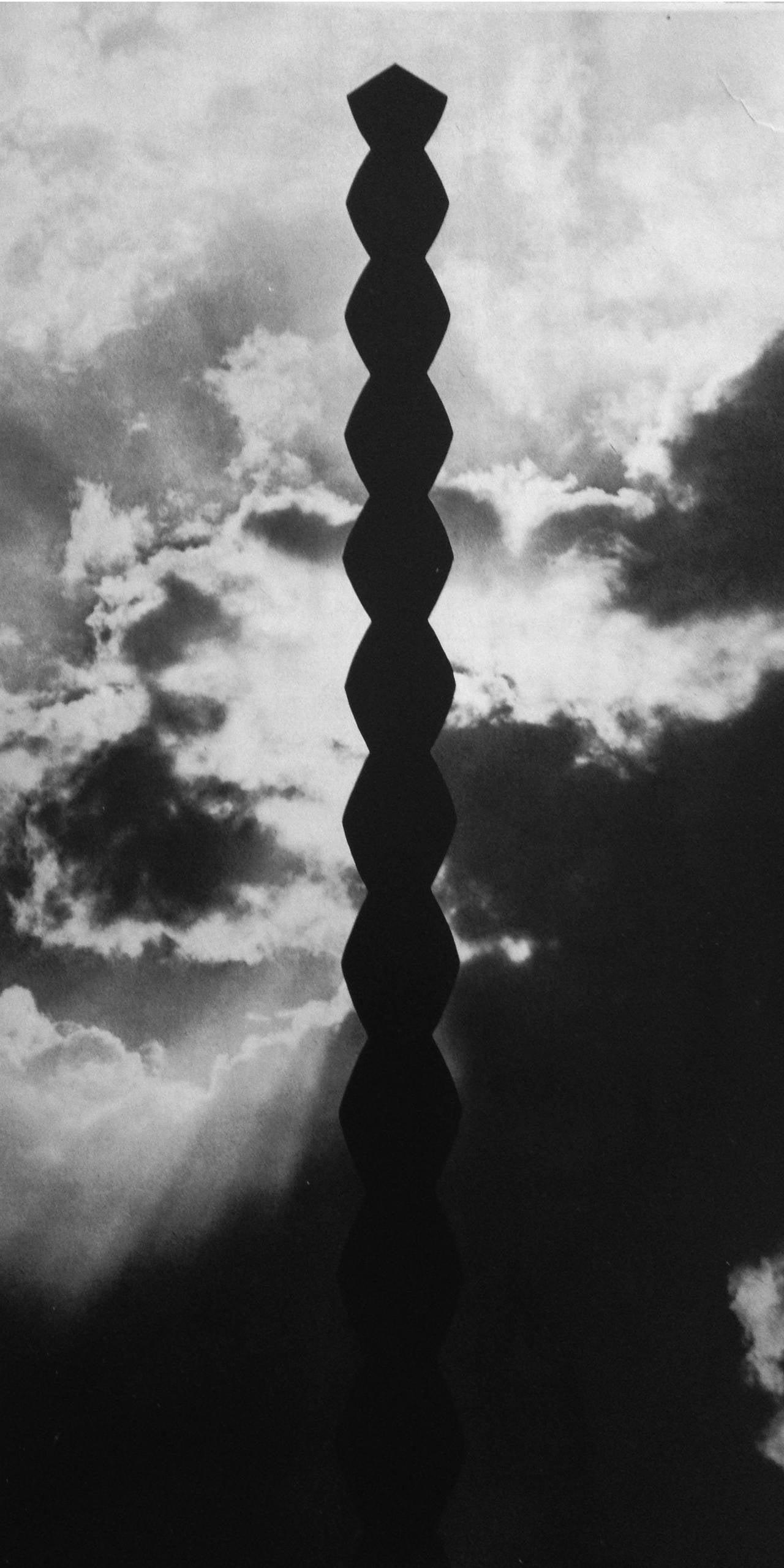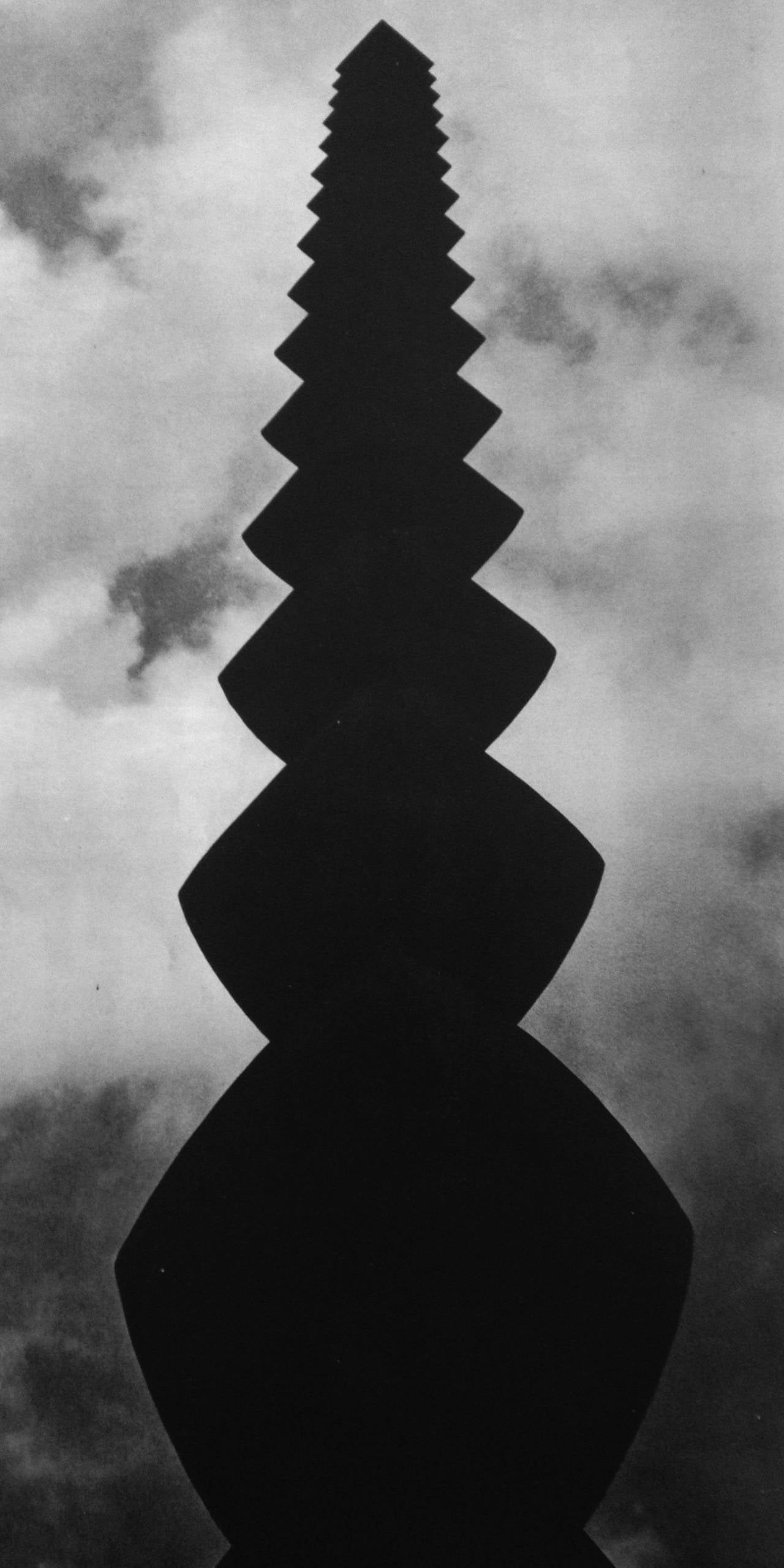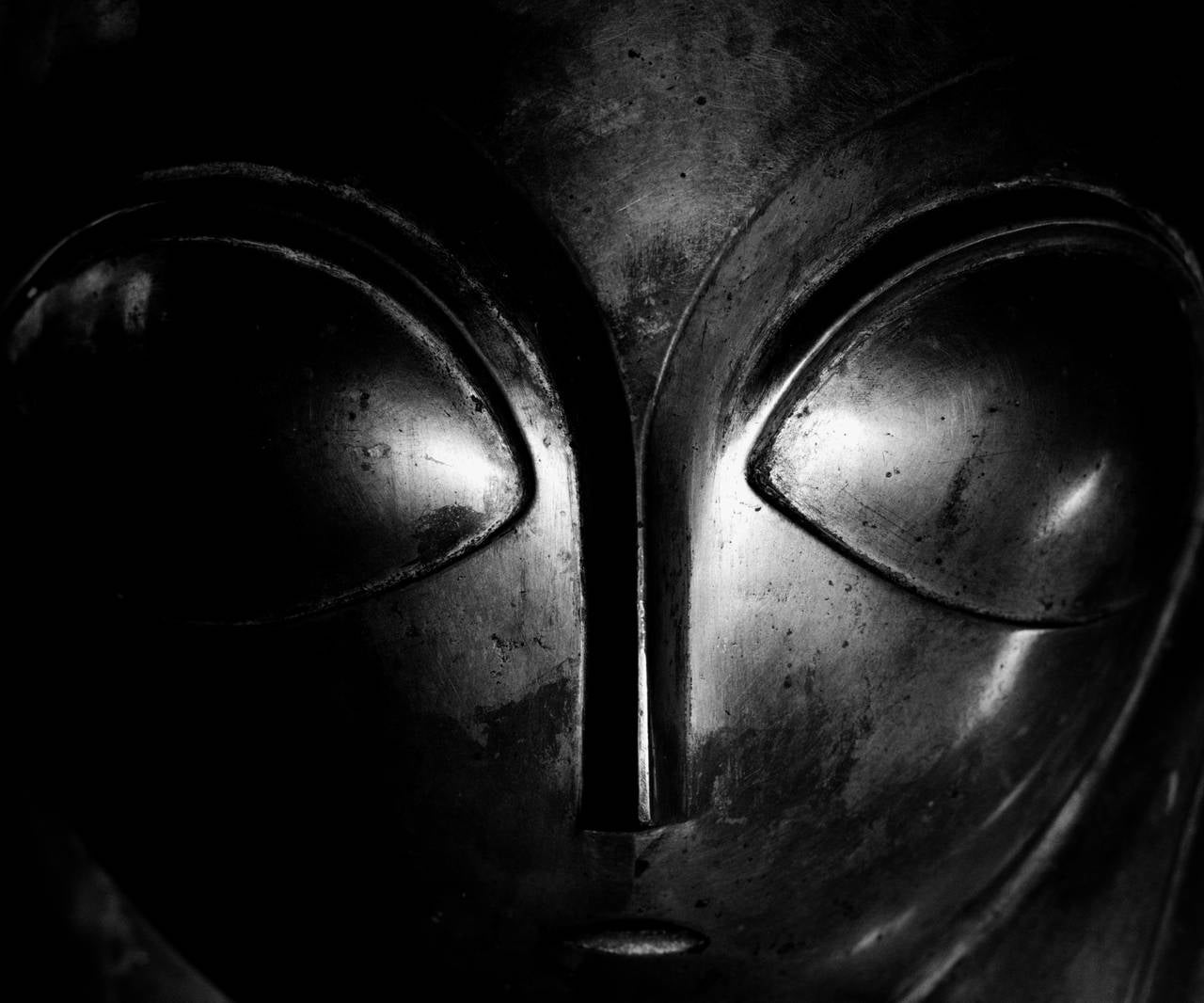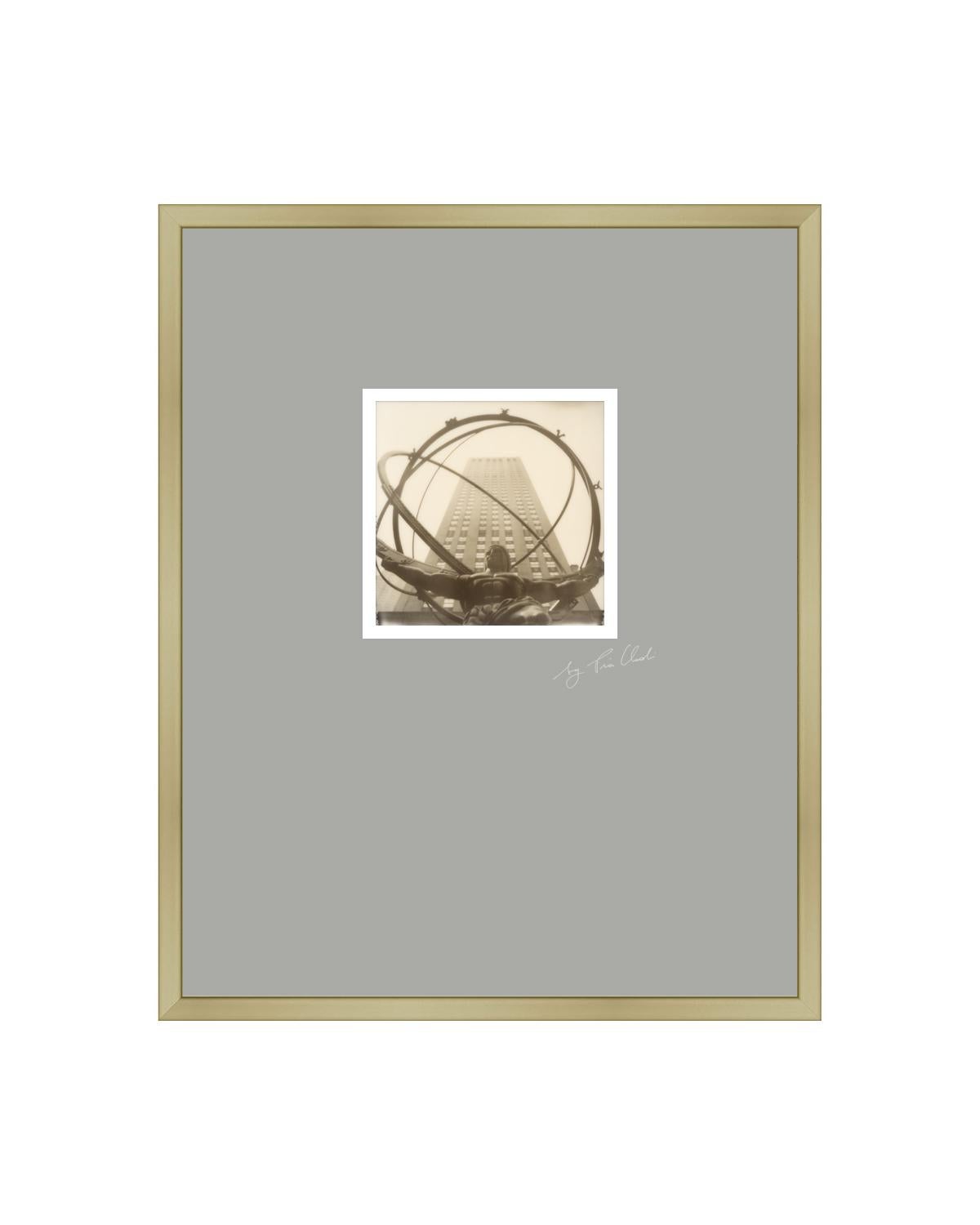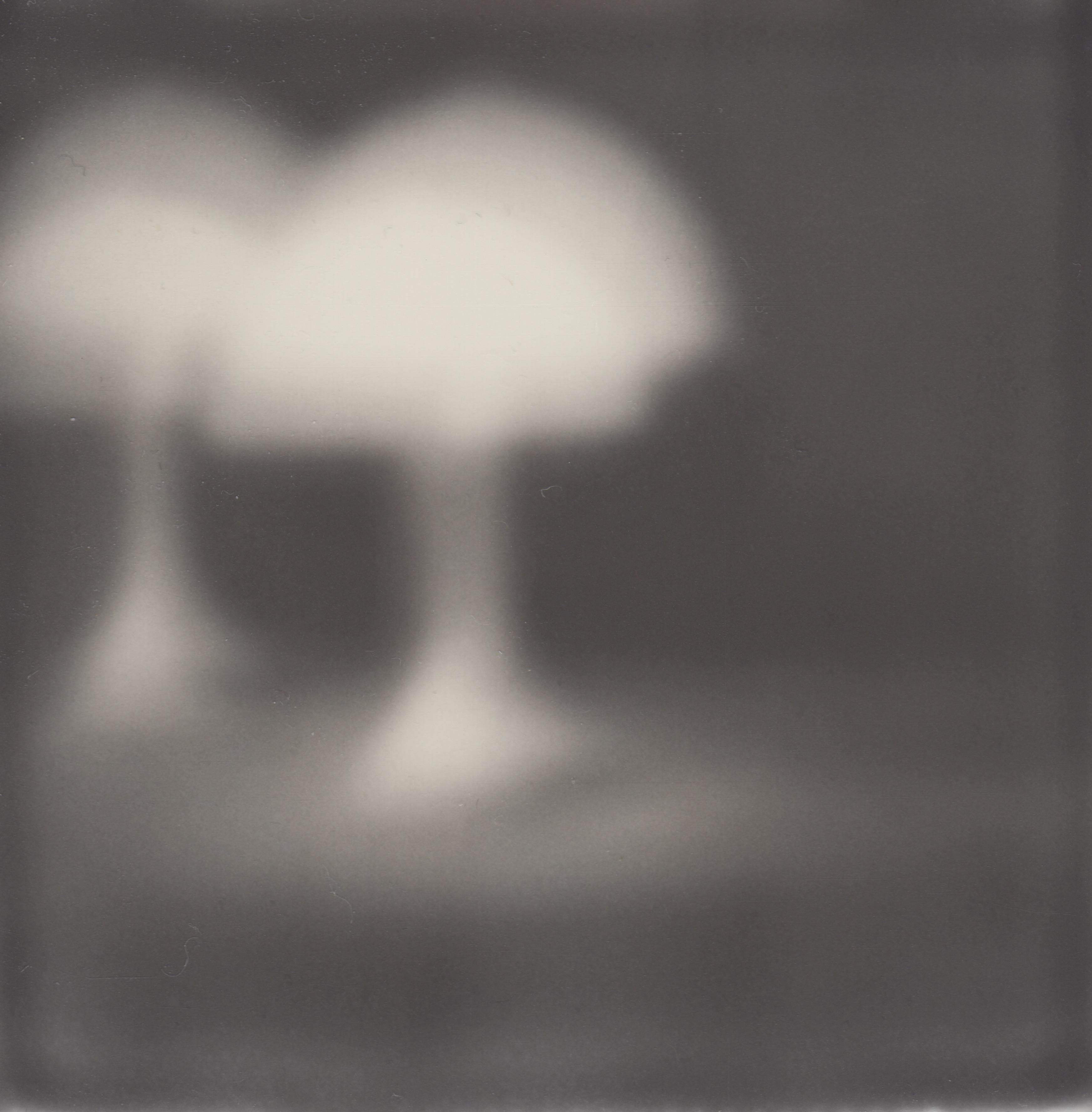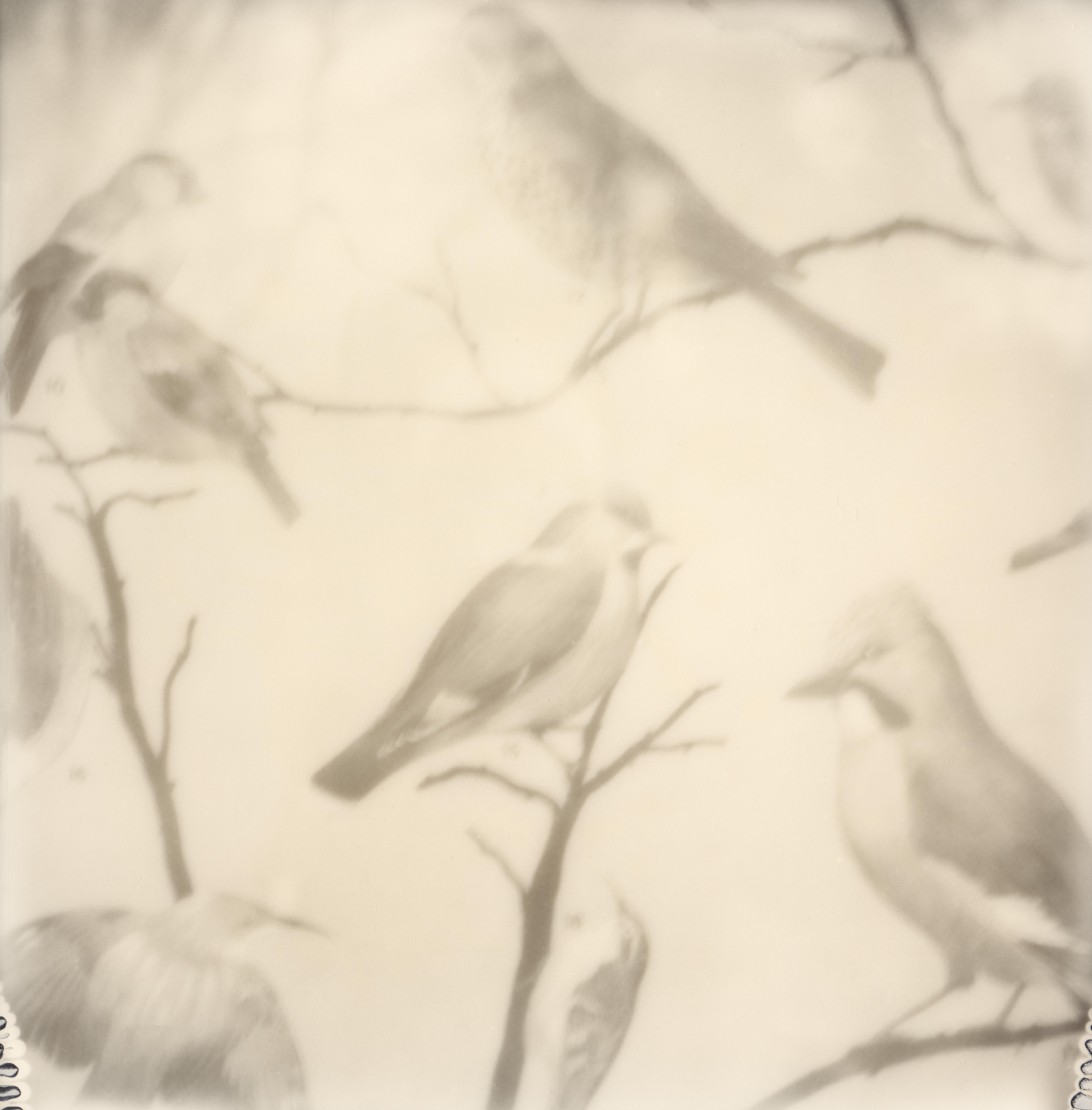Items Similar to Black And White Photograph Of Marc Chagall 1978
Want more images or videos?
Request additional images or videos from the seller
1 of 7
UnknownBlack And White Photograph Of Marc Chagall 1978 1978
1978
About the Item
Marc Chagall (born Moïche Zakharovitch Chagalov; 6 July [O.S. 24 June] 1887 – 28 March 1985) was a Russian-French artist of Belarusian Jewish origin. An early modernist, he was associated with several major artistic styles and created works in a wide range of artistic formats, including painting, drawings, book illustrations, stained glass, stage sets, ceramic tapestries and fine art prints.
Art critic Robert Hughes referred to Chagall as "the quintessential Jewish artist of the twentieth century" (though Chagall saw his work as "not the dream of one people but of all humanity"). According to art historian Michael J. Lewis, Chagall was considered to be "the last survivor of the first generation of European modernists". For decades, he "had also been respected as the world's pre-eminent Jewish artist". Using the medium of stained glass, he produced windows for the cathedrals of Reims and Metz, windows for the UN and the Art Institute of Chicago and the Jerusalem Windows in Israel. He also did large-scale paintings, including part of the ceiling of the Paris Opéra.
Before World War I, he travelled between Saint Petersburg, Paris, and Berlin. During this period he created his own mixture and style of modern art based on his idea of Eastern European Jewish folk culture. He spent the wartime years in Soviet Belarus, becoming one of the country's most distinguished artists and a member of the modernist avant-garde, founding the Vitebsk Arts College before leaving again for Paris in 1923.
He had two basic reputations, writes Lewis: as a pioneer of modernism and as a major Jewish artist. He experienced modernism's "golden age" in Paris, where "he synthesized the art forms of Cubism, Symbolism, and Fauvism, and the influence of Fauvism gave rise to Surrealism". Yet throughout these phases of his style "he remained most emphatically a Jewish artist, whose work was one long dreamy reverie of life in his native village of Vitebsk." "When Matisse dies," Pablo Picasso remarked in the 1950s, "Chagall will be the only painter left who understands what colour really is".
Marc Chagall was born Moishe Shagall in a Lithuanian Jewish Hassidic family in Liozna, near the city of Vitebsk (Belarus, then part of the Russian Empire) in 1887. At the time of his birth, Vitebsk's population was about 66,000, with half the population being Jewish. A picturesque city of churches and synagogues, it was called "Russian Toledo", after a cosmopolitan city of the former Spanish Empire. As the city was built mostly of wood, little of it survived years of occupation and destruction during World War II.
Chagall was the eldest of nine children. The family name, Shagal, is a variant of the name Segal, which in a Jewish community was usually borne by a Levitic family. His father, Khatskl (Zachar) Shagal, was employed by a herring merchant, and his mother, Feige-Ite, sold groceries from their home. His father worked hard, carrying heavy barrels but earning only 20 roubles each month (the average wages across the Russian Empire being 13 roubles a month). Chagall would later include fish motifs "out of respect for his father", writes Chagall biographer, Jacob Baal-Teshuva. Chagall wrote of these early years:
Day after day, winter and summer, at six o'clock in the morning, my father got up and went off to the synagogue. There he said his usual prayer for some dead man or other. On his return he made ready the samovar, drank some tea and went to work. Hellish work, the work of a galley-slave. Why try to hide it? How tell about it? No word will ever ease my father's lot... There was always plenty of butter and cheese on our table. Buttered bread, like an eternal symbol, was never out of my childish hands.
One of the main sources of income of the Jewish population of the town was from the manufacture of clothing that was sold throughout the Russian Empire. They also made furniture and various agricultural tools. From the late 18th century to the First World War, the Imperial Russian government confined Jews to living within the Pale of Settlement, which included modern Ukraine, Belarus, Poland, Lithuania, and Latvia, almost exactly corresponding to the territory of the Polish-Lithuanian Commonwealth recently taken over by Imperial Russia. This caused the creation of Jewish market-villages (shtetls) throughout today's Eastern Europe, with their own markets, schools, hospitals, and other community institutions.
Chagall wrote as a boy; "I felt at every step that I was a Jew—people made me feel it". During a pogrom, Chagall wrote that: "The street lamps are out. I feel panicky, especially in front of butchers' windows. There you can see calves that are still alive lying beside the butchers' hatchets and knives". When asked by some pogromniks "Jew or not?", Chagall remembered thinking: "My pockets are empty, my fingers sensitive, my legs weak and they are out for blood. My death would be futile. I so wanted to live". Chagall denied being a Jew, leading the pogromniks to shout "All right! Get along!"
Most of what is known about Chagall's early life has come from his autobiography, My Life. In it, he described the major influence that the culture of Hasidic Judaism had on his life as an artist. Chagall related how he realised that the Jewish traditions in which he had grown up were fast disappearing and that he needed to document them. Vitebsk itself had been a centre of that culture dating from the 1730s with its teachings derived from the Kabbalah. Chagall scholar Susan Tumarkin Goodman describes the links and sources of his art to his early home:
Chagall's art can be understood as the response to a situation that has long marked the history of Russian Jews. Though they were cultural innovators who made important contributions to the broader society, Jews were considered outsiders in a frequently hostile society... Chagall himself was born of a family steeped in religious life; his parents were observant Hasidic Jews who found spiritual satisfaction in a life defined by their faith and organized by prayer.
Chagall was friends with Sholom Dovber Schneersohn, and later with Menachem M. Schneerson.
In Russian Empire at that time, Jewish children were not allowed to attend regular schools or universities. Their movement within the city was also restricted. Chagall therefore received his primary education at the local Jewish religious school, where he studied Hebrew and the Bible. At the age of 13, his mother tried to enroll him in a regular high school, and he recalled, "But in that school, they don't take Jews. Without a moment's hesitation, my courageous mother walks up to a professor." She offered the headmaster 50 roubles to let him attend, which he accepted.
A turning point of his artistic life came when he first noticed a fellow student drawing. Baal-Teshuva writes that for the young Chagall, watching someone draw "was like a vision, a revelation in black and white". Chagall would later say that there was no art of any kind in his family's home and the concept was totally alien to him. When Chagall asked the schoolmate how he learned to draw, his friend replied, "Go and find a book in the library, idiot, choose any picture you like, and just copy it". He soon began copying images from books and found the experience so rewarding he then decided he wanted to become an artist.
He eventually confided to his mother, "I want to be a painter", although she could not yet understand his sudden interest in art or why he would choose a vocation that "seemed so impractical", writes Goodman. The young Chagall explained, "There's a place in town; if I'm admitted and if I complete the course, I'll come out a regular artist. I'd be so happy!" It was 1906, and he had noticed the studio of Yehuda (Yuri) Pen, a realist artist who also operated a small drawing school in Vitebsk, which included the future artists El Lissitzky and Ossip Zadkine. Due to Chagall's youth and lack of income, Pen offered to teach him free of charge. However, after a few months at the school, Chagall realized that academic portrait painting did not suit his desires.
Author Serena Davies writes that "By the time he died in France in 1985—the last surviving master of European modernism, outliving Joan Miró by two years—he had experienced at first hand the high hopes and crushing disappointments of the Russian revolution, and had witnessed the end of the Pale of Settlement, the near annihilation of European Jewry, and the obliteration of Vitebsk, his home town, where only 118 of a population of 240,000 survived the Second World War."
Chagall's final work was a commissioned piece of art for the Rehabilitation Institute of Chicago. The maquette painting titled Job had been completed, but Chagall died just before the completion of the tapestry. Yvette Cauquil-Prince was weaving the tapestry under Chagall's supervision and was the last person to work with Chagall. She left Vava and Marc Chagall's home at 4 pm on 28 March after discussing and matching the final colors from the maquette painting for the tapestry. He died that evening.
His relationship with his Jewish identity was "unresolved and tragic", Davies states. He would have died without Jewish rites, had not a Jewish stranger stepped forward and said the kaddish, the Jewish prayer for the dead, over his coffin. Chagall is buried alongside his last wife Valentina "Vava" Brodsky Chagall, in the multi-denominational cemetery in the traditional artists' town of Saint Paul de Vence, in the French region of Provence.
- Creation Year:1978
- Dimensions:Height: 7 in (17.78 cm)Width: 5 in (12.7 cm)
- Medium:
- Period:
- Condition:Good, Please see photos.
- Gallery Location:Surfside, FL
- Reference Number:1stDibs: LU3826629372
About the Seller
4.9
Platinum Seller
These expertly vetted sellers are 1stDibs' most experienced sellers and are rated highest by our customers.
Established in 1995
1stDibs seller since 2014
1,550 sales on 1stDibs
Typical response time: 1 hour
- ShippingRetrieving quote...Ships From: Surfside, FL
- Return PolicyA return for this item may be initiated within 3 days of delivery.
More From This SellerView All
- Large Michal Rovner Photograph, Photo Print on Paper Israeli MasterBy Michal RovnerLocated in Surfside, FLHand signed, numbered and dated. the edition is marked PP 1/3 and dated 2002. This is a Photograph printed on a rag type paper with text in body. I believe this piece relates to t...Category
Early 2000s Black and White Photography
MaterialsPhotographic Paper
- Vintage Photograph Male Nude Platinum Print Photo 'Ring Around the Rosie'By Skip ArnoldLocated in Surfside, FLPrinted by Muse X in Los Angeles. These are unsigned from a small edition. sepia-toned platinum palladium photographs on paper by Skip Arnold, show the always attractive artist, nude...Category
1990s Performance Black and White Photography
MaterialsPhotographic Paper, Platinum
- Vintage Photograph Male Nude Platinum Print Photo 'Ring Around the Rosie'By Skip ArnoldLocated in Surfside, FLPrinted by Muse X in Los Angeles. These are unsigned from a small edition. sepia-toned platinum palladium photographs on paper by Skip Arnold, show the always attractive artist, nude...Category
1990s Performance Black and White Photography
MaterialsPhotographic Paper, Platinum
- Vintage Photograph Male Nude Platinum Print Photo 'Ring Around the Rosie'By Skip ArnoldLocated in Surfside, FLPrinted by Muse X in Los Angeles. These are unsigned from a small edition. sepia-toned platinum palladium photographs on paper by Skip Arnold, show the always attractive artist, nude...Category
1990s Performance Black and White Photography
MaterialsPhotographic Paper, Platinum
- Vintage Photograph Male Nude Platinum Print Photo 'Ring Around the Rosie'By Skip ArnoldLocated in Surfside, FLPrinted by Muse X in Los Angeles. These are unsigned from a small edition. sepia-toned platinum palladium photographs on paper by Skip Arnold, show the always attractive artist, nude...Category
1990s Performance Black and White Photography
MaterialsPhotographic Paper, Platinum
- Bernard PfriemBy Fred McDarrahLocated in Surfside, FLBernard Pfriem (09/07/1916 - 03/07/1996) was born in Cleveland, Ohio. He was most well-known for his large-scale hyper-realistic drawings of the human ...Category
20th Century Black and White Photography
MaterialsPhotographic Paper
You May Also Like
- Photograph The Endless Column IIBy Dan Er. GrigorescuLocated in Paris, FRRomanian photographer, Dan Er. Grigorescu managed to published over 30 books, many receiving awards in Germany and the United States, while living under the Romanian communist regime...Category
20th Century Naturalistic Black and White Photography
MaterialsPhotographic Paper
- Photograph The Endless Column IBy Dan Er. GrigorescuLocated in Paris, FRRomanian photographer, Dan Er. Grigorescu managed to published over 30 books, many receiving awards in Germany and the United States, while living under the Romanian communist regime...Category
20th Century Naturalistic Black and White Photography
MaterialsPhotographic Paper
- Photograph Mademoiselle PoganyBy Dan Er. GrigorescuLocated in Paris, FRRomanian photographer, Dan Er. Grigorescu managed to published over 30 books, many receiving awards in Germany and the United States, while living under the Romanian communist regime...Category
20th Century Modern Black and White Photography
MaterialsPhotographic Paper
- New York - Contemporary Black & White Landscape Polaroid Original PhotographBy Pia ClodiLocated in Salzburg, ATNew York Minute - Black and White Original Polaroid Photograph On a trip to New York, Pia Clodi did what she does best, she stopped, paused for a moment to take in the sights and mo...Category
2010s Contemporary Black and White Photography
MaterialsPolaroid, Photographic Film, Archival Paper, Photographic Paper
- Waiting At The Bar - Still Life Black and White Film Photographic Print FramedBy Pia ClodiLocated in Salzburg, ATWaiting At The Bar - Still Life Black and White Photographic Print Framed Like many of Pia Clodi’s works, this black and white photograph evokes a human presence, even when one cann...Category
21st Century and Contemporary Contemporary Still-life Photography
MaterialsPhotographic Paper, Photographic Film, Black and White, Polaroid
- Bird Print - Still Life Black and White Film Photographic Print FramedBy Pia ClodiLocated in Salzburg, ATBird Print - Still Life Black and White Photographic Print Framed Pia Clodi’s works have a beautiful way of breathing life into the everyday. Taking moments from throughout her life...Category
21st Century and Contemporary Contemporary Still-life Photography
MaterialsPhotographic Film, Photographic Paper, Black and White, Polaroid
Recently Viewed
View AllMore Ways To Browse
Used Black Furniture
Used Furniture White
Black Retro Furniture
Retro White Furniture
Black Vintage Clothing
Black Retro Table
Date Black
Black Small Furniture
Black And White Vintage Furniture
Black And White Set
White Watching
Vintage White Clothing
Glass With Black Base
Wood With Black Legs
Small Black Tables
Black Small Table
Black High Table
White Market
